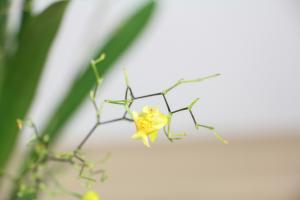How Does Water Move Through Plant Cells
Water is one of the most important elements required for healthy plant growth. It's responsible for providing the plant's cells with nutrients, minerals, and oxygen. Furthermore, it helps in the photosynthesis process, and it regulates the plant's temperature. In order to understand how water moves through plant cells, it's important to understand the structure of plant cells.
The Structure of Plant Cells
Plant cells have a cell wall, which is a rigid structure that surrounds the cell membrane. The cell wall is made up of cellulose, which is a carbohydrate. The cell membrane is a thin and flexible layer that surrounds the cytoplasm. The cytoplasm is a jelly-like substance that contains organelles such as mitochondria, chloroplasts, and ribosomes.
The Role of Plant Cells in Transporting Water
Transporting water from the roots to the leaves is a crucial process for plant growth. It's carried out by specialized cells known as xylem cells. Xylem cells are long and tubular structures that are arranged in a continuous column inside the stem. They form a network of conduits that transport water, minerals, and nutrients from the roots to the leaves.
The Process of Transporting Water through Xylem Cells
The process of transporting water through xylem cells is called transpiration. The water is pulled from the roots to the leaves through a process known as the transpiration stream. The transpiration stream is driven by the evaporation of water from the leaves. As water evaporates from the leaves, it creates a negative pressure called the transpirational pull. This negative pressure causes water to move from areas of high concentration to areas of low concentration, thereby pulling water up through the xylem cells.
Factors Affecting Transpiration
Transpiration rate can be influenced by several factors, including temperature, humidity, wind, and light intensity. High temperatures, low humidity, and high wind speed can increase the transpiration rate, whereas low light intensity can decrease it. Plants can also regulate the amount of water loss through transpiration by opening and closing their stomata, which are small pores on the surface of leaves that regulate gas and water exchange.
Conclusion
In conclusion, water is a vital component required for healthy plant growth. Its transportation through plant cells is a complex process that involves the specialized structures of xylem cells and the transpiration stream. Understanding this process can help gardeners and farmers to provide optimal growing conditions for their plants, ensuring the best possible growth and yield.

 how many times do yo...
how many times do yo... how many planted tre...
how many planted tre... how many pine trees ...
how many pine trees ... how many pecan trees...
how many pecan trees... how many plants comp...
how many plants comp... how many plants can ...
how many plants can ... how many plants and ...
how many plants and ... how many pepper plan...
how many pepper plan...
































